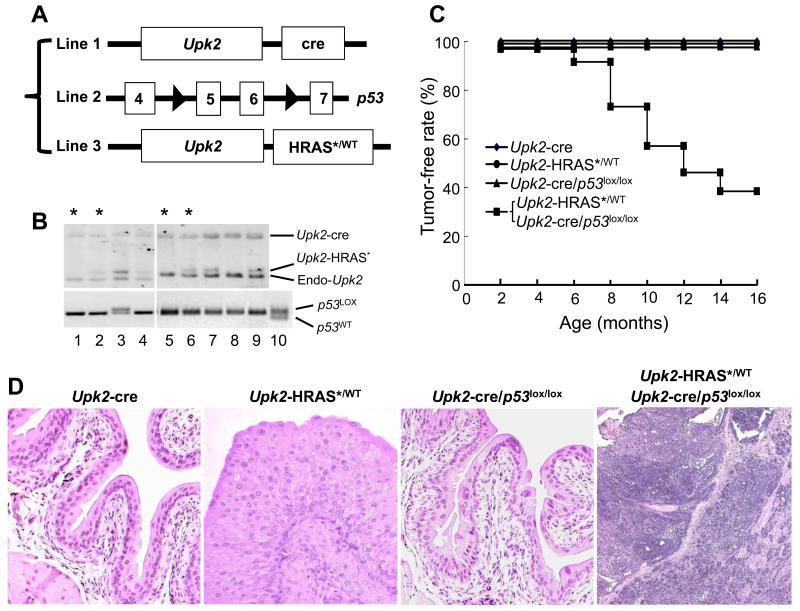Figure 3.
Inactivation of p53 in urothelial cells of transgenic mice expressing oncogenic HRAS*. (A) Three transgenic lines for intercrossing contained transgene of uroplakin II promoter (Upk2) driving cre recombinase (Line 1); floxed p53 where exons 5 and 6 were flanked by loxP sites (Line 2); and Upk2 driving oncogenic HRAS*. (B) Offspring of two representative crosses were genotyped by Southern blotting of restriction-digested tail genomic DNA (upper panels) using a mouse Upk2 probe, revealing the 5.4-kB Upk2–cre transgene fragment, the 1.4-kB Upk2-HRAS* fragment and the 1.1-kB endogenous Upk2 fragment (endo-Upk2). The same DNA samples were subject to PCR using primers specifically detecting the first loxP site of the p53 mutant allele. Asterisks denote the four major genotypes chosen for additional analyses (also see C). (C) The rate of the four major genotypes free of high-grade muscle-invasive urothelial carcinoma (tumor-free rate). Note that only mice expressing oncogenic HRAS* as well as lacking p53 in urothelia developed invasive urothelial carcinoma. (D) Representative H&E images of the four genotypes (all 8 months old) (see text). Magnification: 200 ×.

